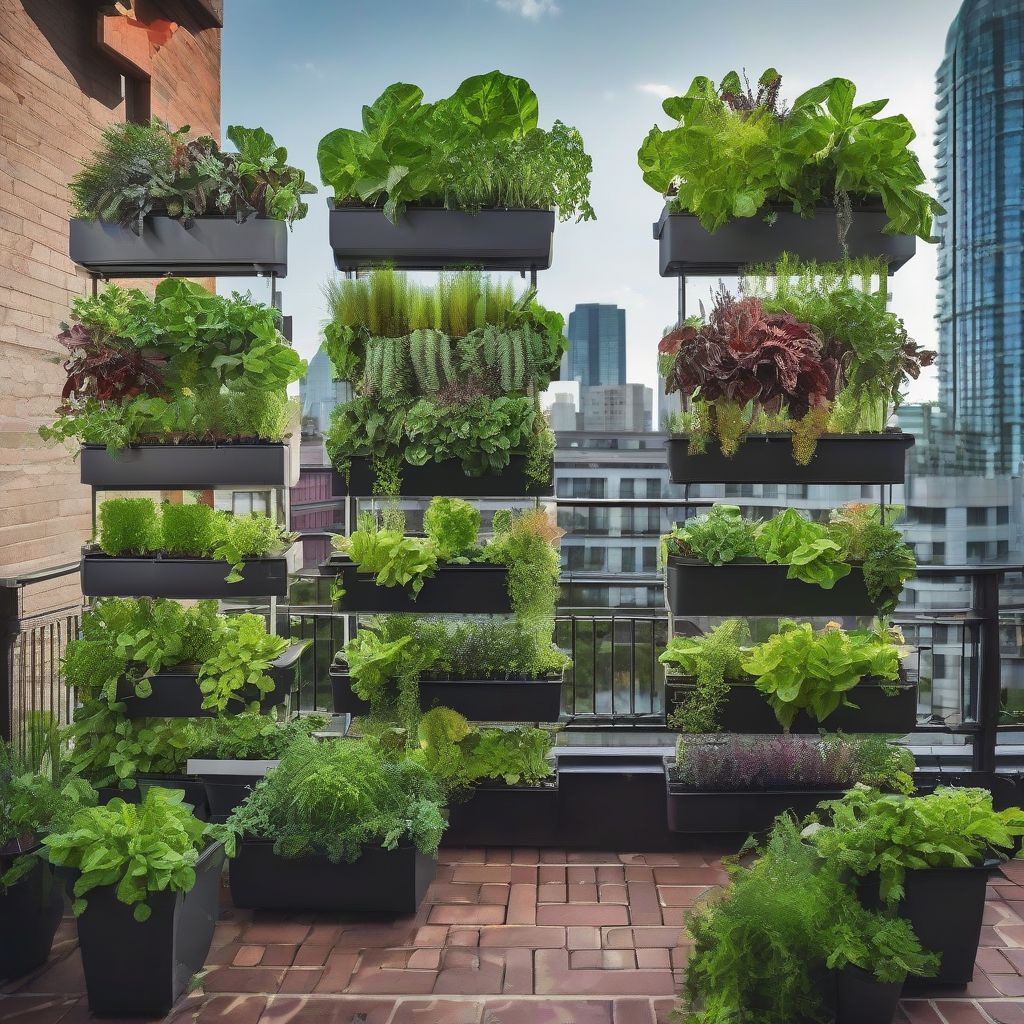Have you ever dreamt of biting into a juicy tomato, warmed by the sun and picked fresh from your very own garden? It’s a dream many share, even those nestled in the heart of a bustling city. Urban gardening is a growing trend, offering a chance to reconnect with nature, enjoy fresh and flavorful produce, and embrace a more sustainable lifestyle. Whether you have a balcony, rooftop, or just a sunny windowsill, this guide will provide you with all the information you need to start growing your own food in an urban environment.
Assessing Your Urban Garden Space
Before you grab your gardening gloves, take a moment to assess the space you have available.
Sunlight Requirements for Urban Gardens
Sunlight is the lifeblood of your garden. Most edible plants thrive in at least 6 hours of direct sunlight per day.
- South-facing balconies and rooftops are ideal, receiving the most sunlight throughout the day.
- East-facing spaces get morning sun, suitable for leafy greens and some root vegetables.
- West-facing areas receive afternoon sun, perfect for heat-tolerant plants like tomatoes and peppers.
Even if your space doesn’t receive abundant sunlight, don’t despair! There are plenty of shade-tolerant edible plants to choose from, like lettuce, spinach, and kale.
Utilizing Vertical Space in Urban Gardens
In urban environments, space is often limited. This is where vertical gardening comes in. Utilizing trellises, hanging planters, and vertical gardens can maximize your growing area, allowing you to cultivate a surprising amount of food in a small footprint. Vining plants like cucumbers, beans, and tomatoes are excellent choices for vertical gardening.
 Urban Garden Vertical Planting
Urban Garden Vertical Planting
Choosing the Right Plants for Your Urban Garden
Selecting the right plants for your urban garden is crucial for a successful harvest. Consider your local climate, available sunlight, and personal preferences.
Best Vegetables for Urban Gardens
Some vegetables are particularly well-suited to urban gardening, even for beginners:
- Tomatoes: A staple in many gardens, tomatoes thrive in containers and are relatively easy to grow.
- Peppers: Like tomatoes, peppers enjoy plenty of sunlight and can be grown in pots.
- Lettuce and Salad Greens: These cool-season crops are perfect for shady spots and can be harvested continuously for a steady supply of fresh salads.
- Herbs: Herbs like basil, mint, and parsley add flavor to your dishes and are generally low-maintenance, making them ideal for urban gardens.
Considerations for Urban Fruit Trees
Don’t think you’re limited to vegetables! Dwarf fruit trees are a fantastic option for urban gardens. These smaller varieties are bred to thrive in containers, making them perfect for balconies and patios. Citrus trees like lemons and limes, as well as apple and pear trees, can add a touch of beauty and fresh fruit to your urban oasis.
Essential Urban Gardening Supplies
Now that you’ve assessed your space and chosen your plants, it’s time to gather the necessary supplies.
Containers for Urban Gardening
The right containers are essential for healthy plant growth. Choose pots with adequate drainage holes to prevent waterlogging. Fabric grow bags are a popular choice for urban gardens, as they are lightweight, breathable, and promote good air circulation around the roots.
Soil and Fertilizer for Urban Gardens
Investing in high-quality potting mix is crucial for urban gardens. Unlike traditional garden soil, potting mix is specifically formulated to provide optimal drainage and aeration for containerized plants. Additionally, supplementing with organic fertilizers throughout the growing season will provide your plants with the nutrients they need to thrive.
Urban Garden Care and Maintenance
Once your urban garden is up and running, regular care and maintenance will ensure a bountiful harvest.
Watering Your Urban Garden
Proper watering is essential for the health of your plants. Check the moisture level of the soil regularly, and water deeply when the top inch of soil feels dry. Avoid overwatering, as this can lead to root rot.
Pest and Disease Control in Urban Gardens
Urban gardens are not immune to pests and diseases. Regularly inspect your plants for any signs of infestation or disease, and take appropriate measures to address them. Companion planting, using insecticidal soap, and introducing beneficial insects can help control pests naturally.
Conclusion: Reaping the Rewards of Urban Gardening
Growing your own food in an urban garden is a rewarding experience that connects you with nature, promotes sustainability, and provides you with fresh, flavorful produce. While it may seem daunting at first, with a little planning and effort, anyone can create a thriving urban oasis. Embrace the journey, experiment with different plants and techniques, and most importantly, enjoy the fruits (and vegetables!) of your labor.
Ready to start your urban gardening adventure? Share your experiences and any questions you may have in the comments below! We’d love to hear from you.
[amazon bestseller=”urban gardening”]
